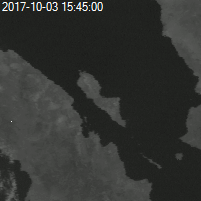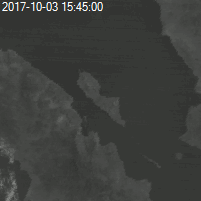Clean Power Research has officially released SolarAnywhere® Data version 3.3, making it our most up-to-date bankable dataset for resource assessment, operational monitoring and forecasting solar PV. In the new version, 21 years of data are represented in the new Typical Year dataset, and we added coverage for South America. Version 3.3 was previously in public beta. A complete list of the updates can be found in the version release notes.
The more than two decades of insolation data now included in the Typical Year and probability of exceedance (PXX) datasets is notable because the period is longer than a typical twenty-year power purchase agreement. Statistically speaking, more years of data means more accurate estimates of P50 and P90 insolation.
In addition, we’ve extended coverage to South America. According to analysts, Latin America will reach 10% of global PV demand by 2020. Companies looking to capture growth in emerging solar markets now have access to consistent data services across a growing share of the globe.
Our one-region world licensing model (pay by access level, not by geography) means there’s no additional cost to get data outside of the U.S. Typical Year Data licenses now have access to data in South America, North America, Hawaii, the Caribbean, India and the Middle East. Sites licenses can be added anywhere we have coverage.
Customers can access the new version through the data website by setting the solar model to V3.3. API users, request WeatherDataSource “SolarAnywhere3_3” or “SolarAnywhereTGY2018”.
Explore new data validation
The update comes with extensive validation, which has been expanded to give unprecedented visibility into the accuracy of the model at different time scales and locations. Known and acceptable measurement uncertainty—one of the five factors of bankable solar data—is essential for understanding solar project risk and minimizing the cost of project financing.
SolarAnywhere global horizontal irradiance (GHI) data are shown to be accurate within +/- 4.5% with 95% confidence on an annual basis, re-affirming the results of previous studies. The study also shows for the first time that SolarAnywhere estimates of long-term insolation are within +/- 3.0% for all 14 validation sites in North America, all without the need for regional or site-specific tuning.
What else is on the horizon?
GOES-17 transitioned to operations as NOAA’s GOES West satellite last month. The new satellite brings the same exciting technology that GOES-16 brought to the East coast last year, and we’re working hard to take advantage of the new capabilities. In testing we’ve found that the new satellites have more stable navigation, which will result in better real-time and forecast accuracy.


Image loops for same location and time from GOES-16 (Right) and its predecessor, GOES-13 (Left) display the improved stability of the newer satellites
Visit SolarAnywhere.com or Contact us to learn more about any of our services.
